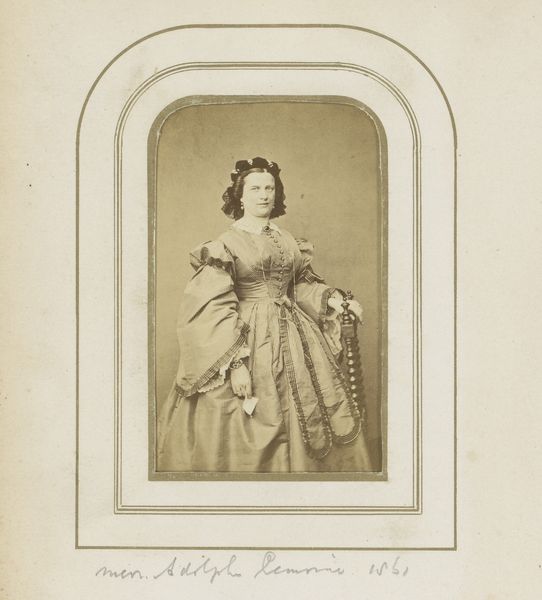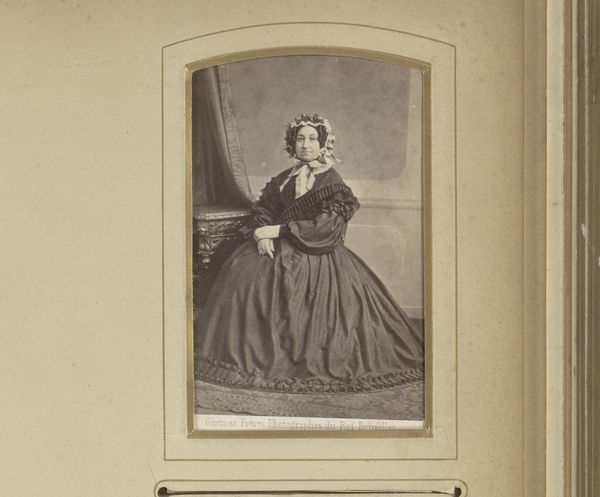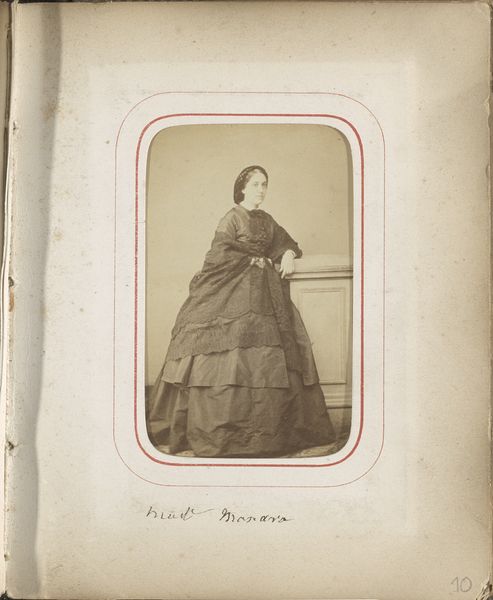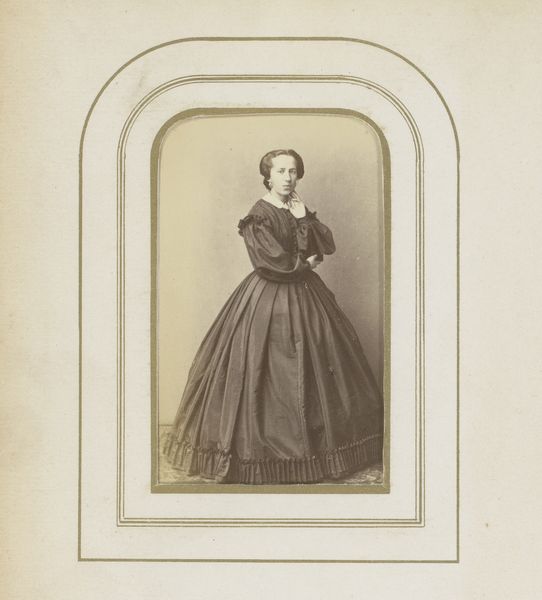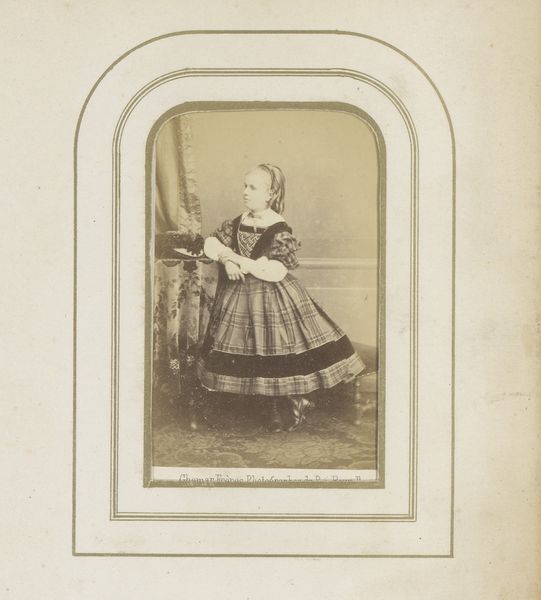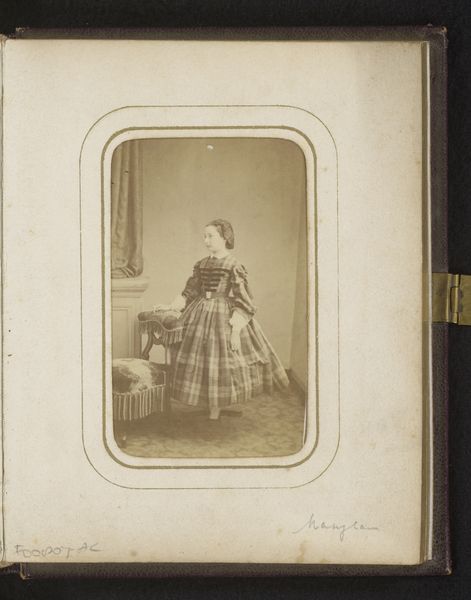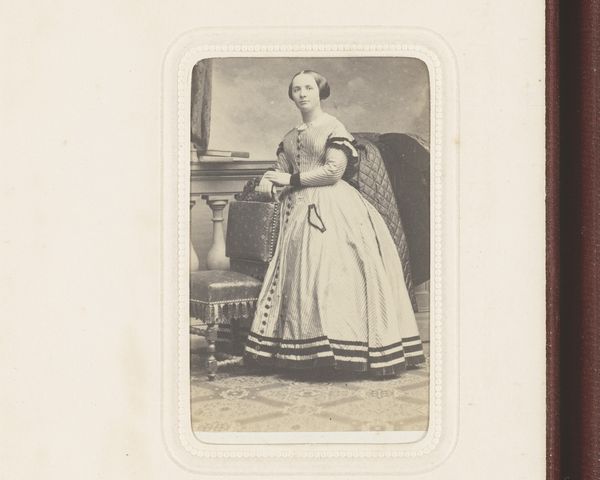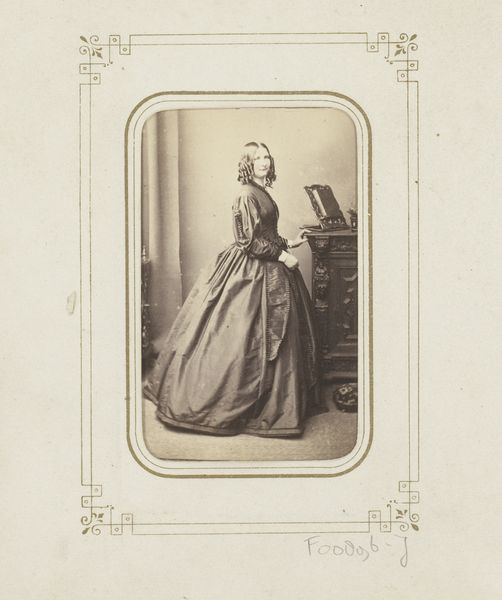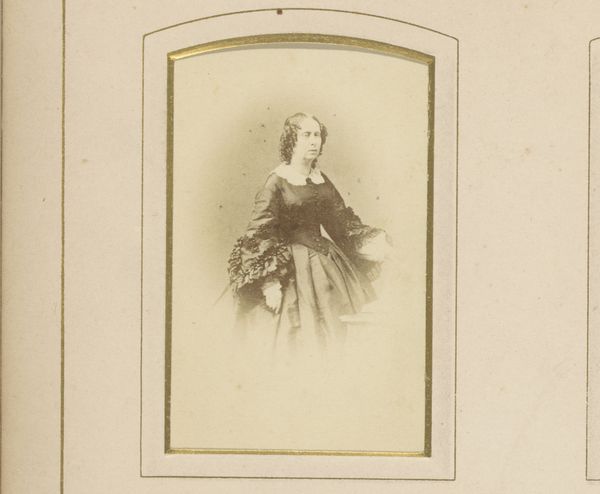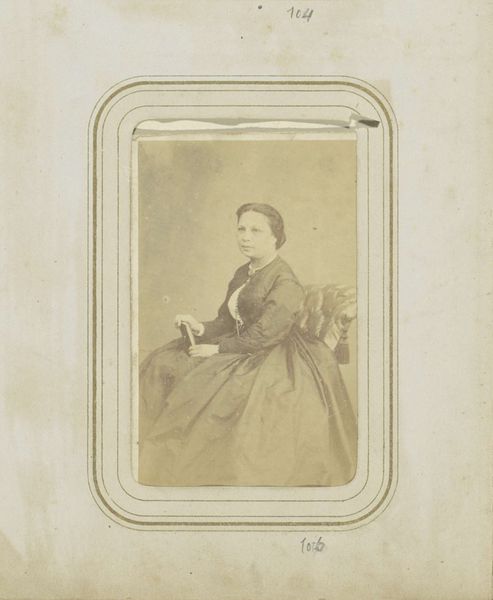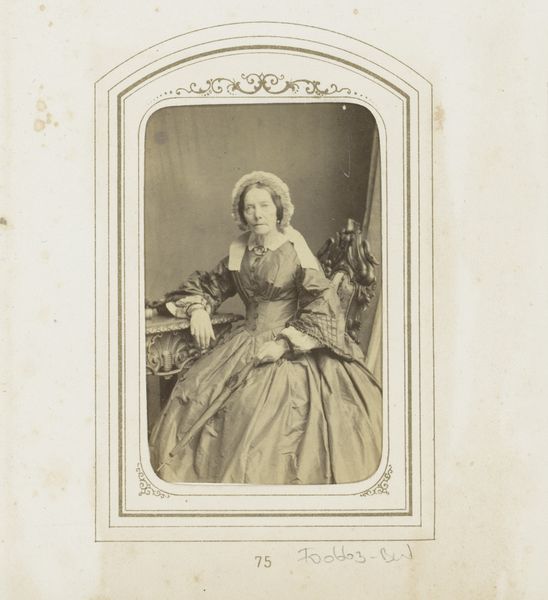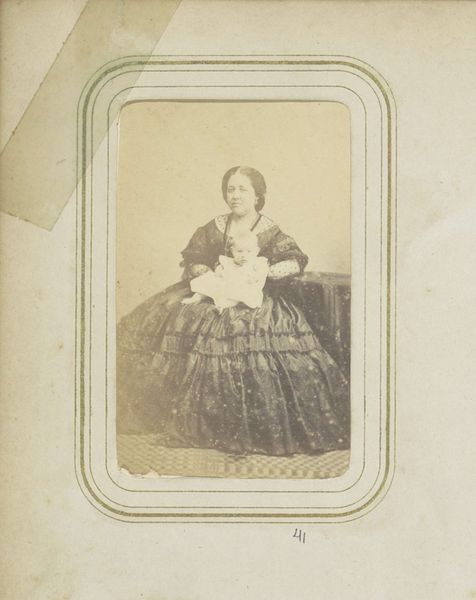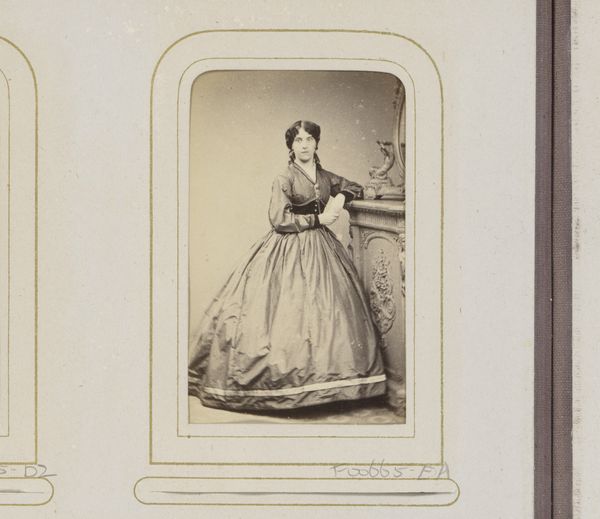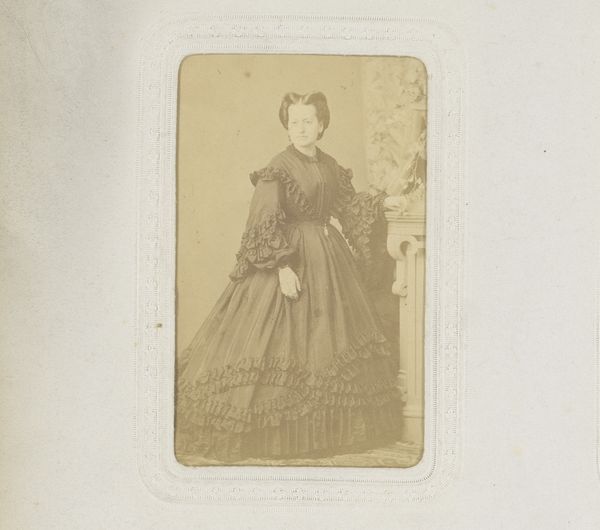
photography, albumen-print
#
portrait
#
aged paper
#
photography
#
historical fashion
#
albumen-print
Dimensions: height 98 mm, width 61 mm
Copyright: Rijks Museum: Open Domain
Curator: What a striking sense of stillness pervades this image. The pose and faded tones suggest a carefully constructed presentation, yet also, something more vulnerable beneath. Editor: We’re looking at a portrait of Mrs. Oscar Galline, an albumen print likely dating from before 1869, produced by Disdéri & Co. It’s now part of the Rijksmuseum’s collection, offering a window into 19th-century bourgeois portraiture. Curator: Albumen prints have such a distinct texture. This one, in particular, with its warm sepia tones, almost feels like looking at a dream. The ruffled dress, the soft light, even the slight blur, imbues a timeless aura. What does the costume convey? Editor: The dress is very much of its time. The multiple layers of fabric, the high collar, and the delicate headpiece speak volumes about the sitter's social standing and the conventions of female representation in that era. These photographic studios played a role in disseminating these standards, and, simultaneously, capturing them. Curator: There is a weight to this representation. But in it, I also see traces of pre-photographic portrait traditions. Almost as though painting informed this new medium in establishing a cultural significance of representing a likeness. The curtain background acts as a symbol, too. Do you see these nods to the theatrical as establishing the sitter as a spectacle of society? Editor: Absolutely. These studios, often drawing on painting traditions, were powerful tools for constructing and communicating social identity. Photography was democratizing image-making but it also reinforced social hierarchies. Someone had to pay to pose in these surroundings and clothes. The image of Mrs. Galline becomes evidence of the larger structures of bourgeois social life at the time. Curator: Seeing the evolution of portraiture, observing the symbolic and social weight it holds across centuries, it provides us with the perspective we need to understand what has been maintained across media or cast aside to reshape representation through an innovative eye. Editor: Indeed. It’s in these quiet, meticulously crafted images that we uncover a society’s aspirations, anxieties, and, of course, its very specific, and very constructed, sense of beauty. It highlights the interplay of art, technology and social structures.
Comments
No comments
Be the first to comment and join the conversation on the ultimate creative platform.
